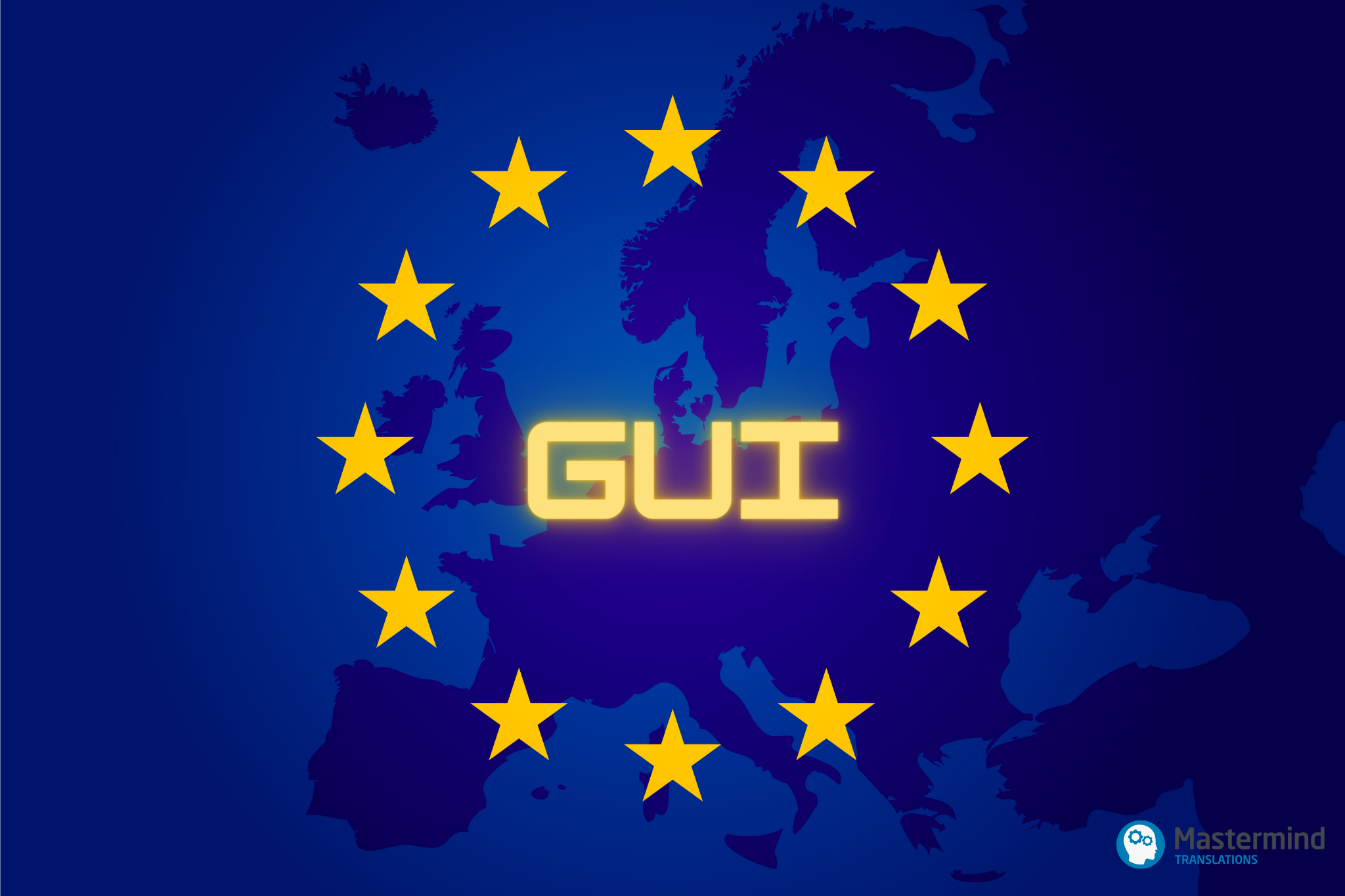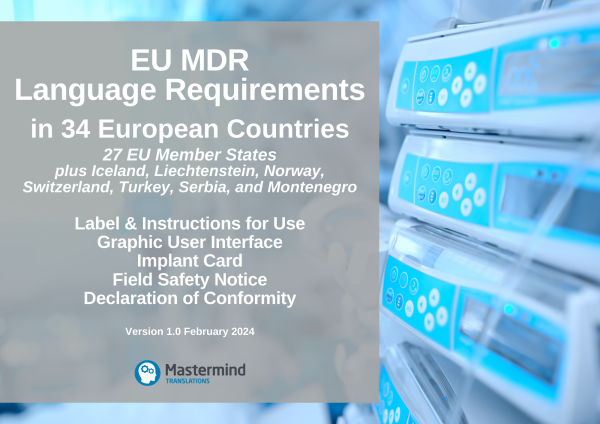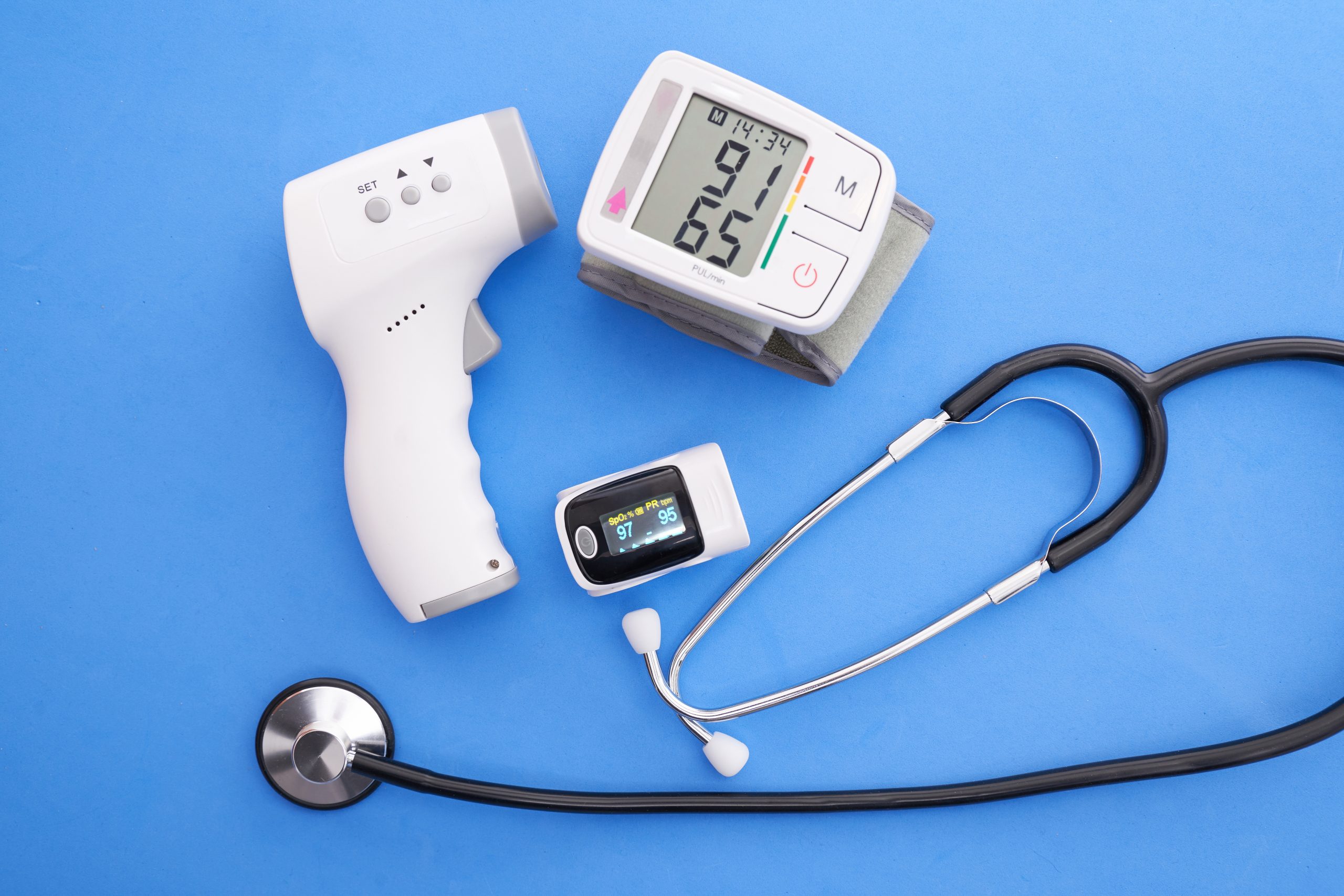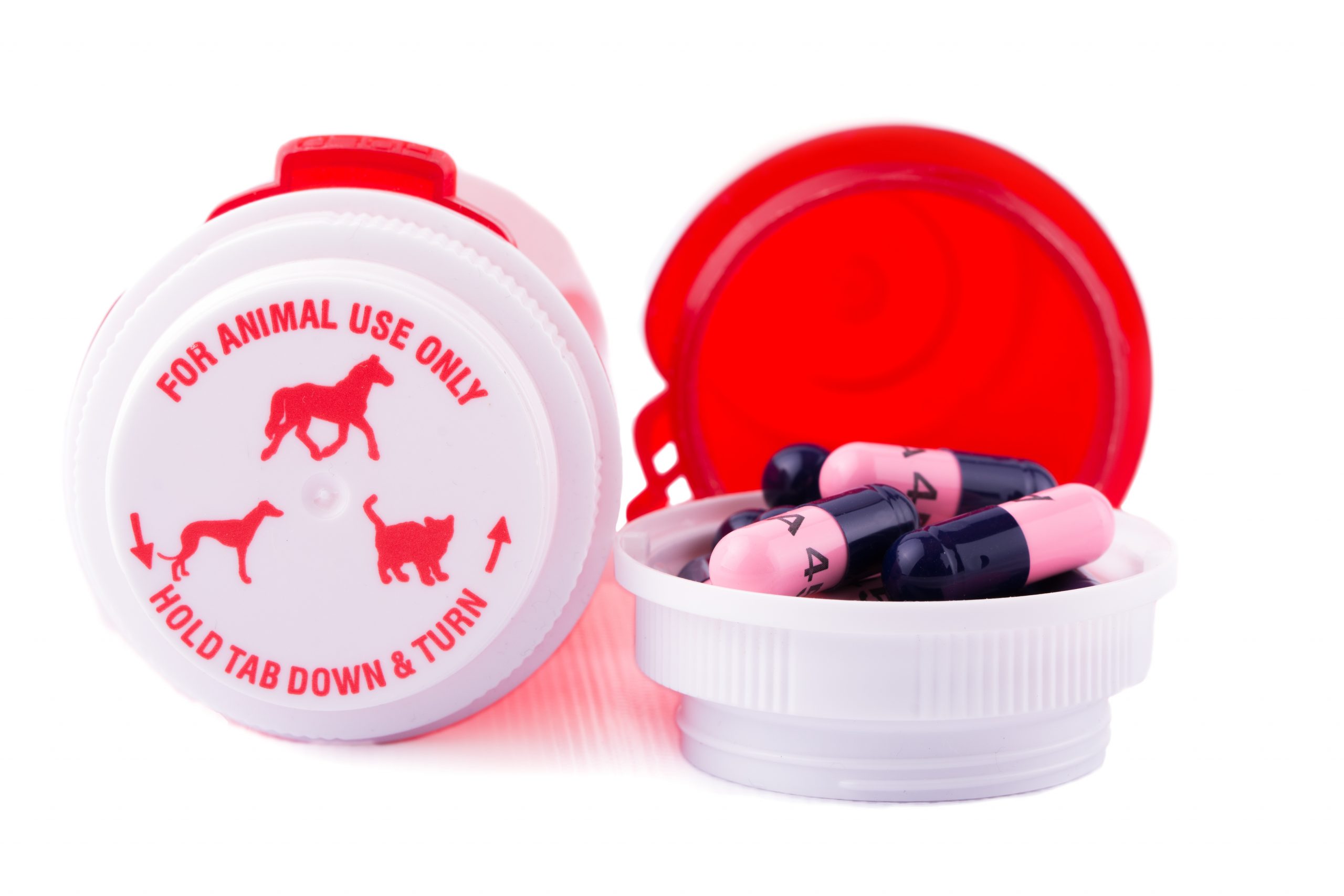As innovative technologies continue to revolutionise healthcare, software has become an indispensable part of many solutions, with as many as one in four medical devices now relying on it. Whether it is software in a medical device (SiMD) or software as a medical device (SaMD), the incorporation of a user-friendly graphical user interface is essential for enhancing usability and functionality. Against this meteoric rise in highly digitised medtech products, the need for clear and precise guidelines on translation for software applications is evident. However, the European regulatory framework for medical devices currently has no separate legal provisions regulating this aspect of medical device translation. In this article, we share insights into the intricacies of the translation requirements for the graphical user interface (GUI) of medical devices placed on the European market. To help manufacturers navigate this evolving landscape with confidence, we explain the language requirements they need to comply with at the EU level, as well as in individual EU Member States. Finally, we provide a reference list of the official languages accepted in each country for the graphical user interface used in devices intended for lay and professional use.
What Are the New EU MDR Language Requirements?
In the EU, manufacturers of medical devices are subject to three levels of language requirements:
- EU Level: These are the general language rules set out in the European Union Medical Device Regulation (MDR 2017/745/EU).
- National Level: These are more specific language rules and guidelines determined by the Member States in response to the MDR.
- Device Level: These are language rules particular to the device.
According to EU MDR Article 10(11), information accompanying a medical device must be in the official languages of the EU Member States where the device is made available to the user or patient. Section 23 of Annex I defines this accompanying information as details necessary for device and manufacturer identification, as well as any safety and performance information found on the device, its packaging, or in the instructions for use (IFU). While there are 24 official EU languages, consideration should be given only to the language requirements of the national markets where the device is being distributed. Each Member State establishes the language(s) it will accept at the national level through supplementary national medical device legislation and/or official guidance issued by its Competent Authority. Additionally, language rules may vary within each Member State depending on factors, such as intended use (lay vs. professional), content type (safety-related or not), or device classification. The same linguistic requirements apply to in vitro diagnostic medical devices (IVDs).
How Do the Translation Requirements of the EU MDR Apply to Medical Device Software Applications?
Even though in its General Safety and Performance Requirements (GSPRs) laid out in Annex I, the MDR places more emphasis on creating user-friendly software interfaces than its predecessor, the Medical Device Directive (MDD), it does not include any specific provisions regulating software localisation. Unsurprisingly, whether the GUI requires a local language version(s) has been one of the most common questions raised by medical device manufacturers.
The general interpretation usually hinges on whether the GUI contains safety and performance information relevant to the user, as set out in Section 23 of Annex I. If it does, it is categorised as ‘information supplied with the medical device’ and therefore subject to the regulatory requirements of MDR Article 10(11). This determination is typically made through a risk analysis.
To provide much needed clarity to manufacturers, in January 2024, the Medical Device Coordination Group (MDCG) compiled two tables, summarising language requirements for medical devices and IVDs, respectively.
It is worth adding that, although the MDR contains different legal provisions that allow the Members to determine language requirements for manufacturers at a national level, the Members are not obliged to do so. So far, 20 of the 30 European Economic Area (EEA) countries have specified their official language rules for the GUI.
How Are These Language Translation Rules Implemented at the National and Device Levels?
EU Member States appear to have adopted the following approaches to the translation requirements for the GUI:
- The GUI is treated as the IFU and therefore the same rules (and exemptions) apply to both.
- The manufacturer should establish through a risk analysis which information in the GUI is necessary for safe use and only this information requires translating.
- The GUI does not need to be translated, as long as the IFU in a national language version(s) is also provided with the device.
While the level of nuance in those approaches varies across individual countries, they provide a useful benchmark for how manufacturers may interpret the EU-level rules, especially for the 10 EEA States with no specific requirements for the GUI translation process.
What Are the Languages Accepted for the GUI for the Professional and Lay Users in Each EU Member State?
The EU recognises the financial burden of manufacturers having to make information available in a number of languages. Therefore, it encourages its Members to consider allowing manufacturers to provide this information in a language other than their national language (e.g. in English) if the safe use of the device is not compromised. Several countries have acknowledged this need and relaxed their rules for products intended for professional use.
Below is the list of languages accepted for the GUI across the EEA for devices intended to be used by laymen and healthcare professionals, respectively.
| Country | Professional User | Lay User |
|---|---|---|
| Austria | Not specified | Not specified |
| Belgium | English; French or Dutch or German upon user’s request | Dutch and French and German |
| Bulgaria | Not specified | Not specified |
| Croatia | Croatian and/or English with user’s prior written consent | Croatian |
| Cyprus | Greek or English | Greek |
| Czech Republic | Czech or English | Czech |
| Denmark | Danish or English | Danish |
| Estonia | Estonian or English | English |
| Finland | Finnish or Swedish or English; Finnish and Swedish for information necessary for safe use | Finnish and Swedish |
| France | French or English | French |
| Germany | Not specified | Not specified |
| Greece | Not specified | Not specified |
| Hungary | Hungarian or English with IFU Hungarian | Hungarian or English with IFU in Hungarian |
| Iceland* | Icelandic or English or another Scandinavian language (except Finnish) | Icelandic; Icelandic or English or another Scandinavian language (except Finnish) for I and IIa class devices; English or another Scandinavian language (except Finnish) for IIb and III class devices if exempted by the CA |
| Ireland | English | English |
| Italy | Not specified | Not specified |
| Latvia | Latvian or English for MDs used solely in a healthcare facility and with its prior consent to the use of foreign language | Latvian or English with IFU in Latvian |
| Liechtenstein* | Not specified | Not specified |
| Lithuania | Not specified | Not specified |
| Luxembourg | French or German or Luxembourgish or English; French or German for AIMDs | French or German or Luxembourgish; French or German for AIMDs |
| Malta | Maltese and English; Maltese or English | Maltese and English; Maltese or English |
| Netherlands | Not specified | Not specified |
| Norway* | Norwegian except for symbols, such as “On”, “Off”, “Load”, “Enter”, “Page up”, or English if exempted by the CA | Norwegian except for symbols, such as “On”, “Off”, “Load”, “Enter”, “Page up” |
| Poland | Polish or English | Polish or English with IFU in Polish (except for MDs intended for use in life and health emergencies) |
| Portugal | Not specified | Not specified |
| Romania | Romanian or English with healthcare professional’s prior written consent | Romanian |
| Slovakia | Slovak or English with IFU in Slovak | Slovak |
| Slovenia | Slovene or another language understandable to the user (typically English) | Slovene |
| Spain | Not specified | Not specified |
| Sweden | Swedish | Swedish |
| Turkey** | Turkish or English with IFU in Turkish | Turkish |
* Non-EU country, but part of the EEA
** Non-EU country, but has access to the EEA through the EU-Turkey Customs Union
For more information on the linguistic requirements for medical devices in each EEA country, please refer to the EU MDR Language Requirements Table 2024. The contents of this Table may change. Last update: April 2024.
Where can we find more information on medical device translation rules?
For more detailed information about the languages accepted for different types of information and documentation, such as labels/IFUs, implant cards, field safety notices, and the EU declaration of conformity, please refer to our EU MDR Language Requirements Table 2024. This resource is regularly updated and covers devices sold in 34 European countries, including the 27 EU countries, as well as Iceland, Liechtenstein, Norway, Switzerland, Turkey, Serbia, and Montenegro. It outlines the language rules specified in the EU MDR, incorporating information from national laws and official guidelines provided by Competent Authorities, expertly translated into English for easy reference, with links to the official sources.
Best Practices for GUI Translation
Recreating the GUI of a medical device in another language version for the European user involves several practical challenges. For a more detailed discussion, please read our article on the GUI translation for medical devices placed on the EU market.
These best practices are crucial for ensuring safe and effective use of your device as well as its regulatory compliance.
- Language Selection
Check which languages are required for your product in the national markets where it is made available to the user. - Translation Quality
Do not rely solely on AI-driven machine translation tools, such as DeepL, for your translation needs. A well-localised GUI is absolutely critical to the safe and effective use of your product. Low or nuanced context, highly technical terminology, length restrictions, and UX are factors that must be considered beyond the simple language-to-language conversion provided by AI tools. - Language Service Provider
Work with a translation service provider who has proven expertise in medtech translation and understands the regulatory requirements for the information your device is accompanied with. They must follow the ISO-recommended translation project lifecycle and be transparent about the steps they have taken to ensure quality and consistency of the translation. - Quality Management System
A robust electronic Quality Management System for version control is indispensable in ensuring consistency across all language versions.
Please note that the information provided in this article is for guidance only and does not constitute professional regulatory advice. In the case of specific questions related to compliance with EU MDR and IVDR, we recommend that manufacturers shall seek assistance from a QA/RA specialist and/or the CA of the country where the device is sold.







